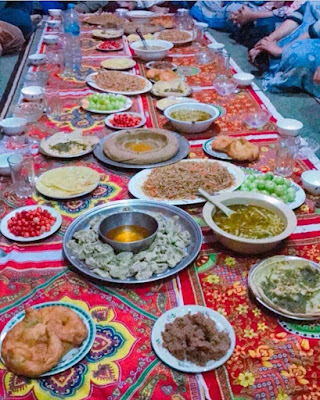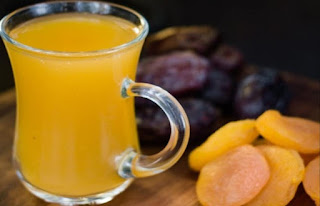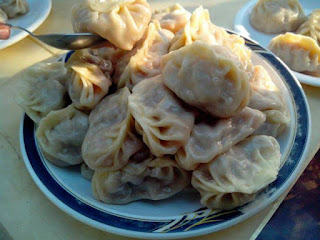Traditional Dishes of Gilgit Baltistan:
Traditional Dishes of Gilgit Baltistan are not spicy and are not like Asian or Central Asian dishes. Foods of northern areas of Pakistan include walnut paste called Muskut, served with a noodle dish called Prapo. Another dish, Tras Pa, is a hand-made noodle dish served with beef curry and vegetables. Both are a staple in Balti cuisine. You can also try a variety of other Balti foods. These foods are very nutritious and delicious to taste.
.jpg)
.jpg)

The minced meat is marinated and cooked until tender. Then, it is served with rice or wheat bread.
Another dish from Gilgit Baltistan is the Mamto, a version of the samosa that is cooked on steam. In Gilgit Baltistan, you can also eat this delicious snack with chutney or pickles.
Other traditional foods of Gilgit Baltistan include nasi (a vegetable stew), harissa, and saag. Guineans make this traditional dish with kneaded barley and spices. It is eaten at breakfast and is sometimes served alongside makki di roti. The saag is typically made with wheat and a nearby oil, such as butter or dry apricot seeds. This dish is so delicious and popular in Gilgit, it is served at weddings and other functions. The beef shank and chicken nihari are the most popular meats used in this dish. These meats are slow-cooked and served with a variety of garnishes. Some people also add fried green chilies and mint leaves to the dish for extra flavor. The meat nihari is a rich and spicy stew and is served for breakfast or lunch.
Mamtu
Shopan:
Marzan:
Marzan is a simple but filling meal that provides the energy needed for Balti people. They traditionally live outdoors and work in mountainous areas. Milking animals like sheep or goats are important to the Balti people. Traditionally, these animals are not consumed as everyday food but are considered a special treat for guests.
The minced meat is marinated in lemon or vinegar. After marinating, the meat is cooked and served with rice or wheat bread. The minced meat is marinated in lemon or vinegar. After marinating, the meat is cooked and served with rice or wheat bread.
The Hunza valley is a great place to try traditional food. The food in Hunza is delicious and rich in natural flavors. There is a very pure taste to Hunza foods. If you are lucky, you might even get to wander through the valley during a special occasion. The appetizing aroma of specially cooked food will cause your mouth to water! While you're wandering through the valley, try some of the Hunza food and enjoy!
Chitrali cuisine:
If you are looking for some of the most delicious, traditional foods of Gilgit Baltistan, look no further than Chitral. The traditional dishes of this northern Pakistani province include some of the most delicious teppanyaki, kebabs, and a number of delicacies that can be found nowhere else. The cuisine in Gilgit Baltistan combines the aforementioned influences, as well as a variety of other cuisines.
Beef Pilaf is a staple dish for large gatherings. This multi-layered delicacy is made of minced meat cooked until tender and then served over rice. Another essential element of Chitrali cuisine is soup. This is due in part to the area's cool climate. The traditional dish Kalli soup, which is made from minced beef, is reminiscent of the Central Asian Laghman soup, but its origins are unclear.
Bread is made with whole-grain flour, which is high in vitamin B-17. The dish also features fried and stuffed dough, both of which are considered delicacies of Gilgit Baltistan. Chapshoro is a popular dish in Gilgit Baltistan. This dish is essentially a stuffed bread that is filled with cleaved meat and seasoned with different spices. This delicious dish is usually served with ketchup or sauce and is best enjoyed with soft drinks. Chitrali cuisine is an exciting taste experience. The traditional dishes of Gilgit Baltistan are sure to please any palate.
Balti soup:
In Gilgit Baltistan, you can try a number of traditional dishes. Balti soup is one of them. This apricot-based soup is traditionally made during the winter season and is a beneficial remedy for cold-season diseases. It also helps relieve constipation. The ingredients used to prepare it are dried apricots, sugar, lemon juice, and water. This dish is served as the first course of a traditional meal in the Valley. Aside from being tasty, Balti soup has other health benefits. It reduces inflammation and helps lower cholesterol levels. If you're looking for a unique meal, try Hunza soup. This dish is not available everywhere, so make sure to visit the Baltistan Valley.

A few other traditional dishes are served during special occasions or during celebrations. Some are served with a bowl of apricot oil, accompanied by wild thyme tea. Some of the dishes, such as the soup, are not fried and are served with a small amount of oil. In addition, the Hunza people use apricot, almond, and walnut oil to cook their foods.






.jpg)



0 Comments